
As Long as You're Near Me is a 1953 West German drama film directed by Harald Braun and starring Maria Schell and O.W. Fischer and Hardy Krüger. It was shot at the Bavaria Studios in Munich. The film's sets were designed by the art director Walter Haag. It was entered into the 1954 Cannes Film Festival.
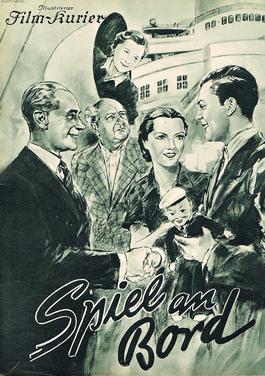
Game on Board is a 1936 German comedy crime film directed by Herbert Selpin and starring Viktor de Kowa, Susi Lanner and Alfred Abel. Location shooting took place in Bremerhaven and New York and on the Atlantic crossing of the ocean liner SS Bremen. Interior scenes were shot at the Tempelhof Studios in Berlin. The film's sets were designed by the art director Erich Czerwonski.
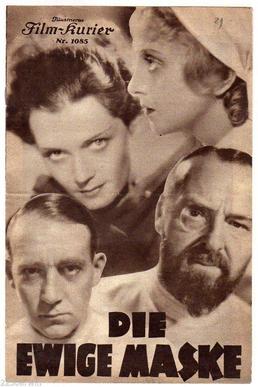
The Eternal Mask is a 1935 Austrian-Swiss drama film directed by Werner Hochbaum and starring Peter Petersen, Mathias Wieman and Franz Schafheitlin. The film was amongst the best ten foreign films of the year judged by the 1937 American National Board of Review of Motion Pictures. It also ran in competition at the 3rd Venice International Film Festival.
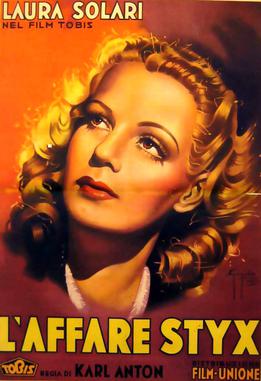
The Thing About Styx is a 1942 German comedy crime film directed by Karl Anton and starring Laura Solari, Viktor de Kowa and Margit Symo. It was based on the novel Rittmeister Styx by Georg Mühlen-Schulte.

Anna Favetti is a 1938 German romantic drama film directed by Erich Waschneck and starring Brigitte Horney, Mathias Wieman and Gina Falckenberg. The screenplay was written by Walter von Hollander, adapted from his own novel Licht im dunklen Haus. It was made at the Babelsberg Studios in Potsdam. Location filming took place in Italy and Switzerland. The film's sets were designed by the art director Gustav A. Knauer.

The Marathon Runner is a 1933 German sports film directed by Ewald André Dupont and starring Brigitte Helm, Hans Brausewetter and Ursula Grabley. It was based on a 1928 novel by Werner Scheff, adapted by screenwriter Thea von Harbou. The film focuses on a love triangle between three German athletes competing at the 1932 Olympic Games in Los Angeles. It was shot at the Johannisthal Studios in Berlin with sets designed by the art directors Ernő Metzner and Erich Zander. The German premiere took place at the Ufa-Palast am Zoo. It was the last film Dupont made in Germany, before escaping into exile following the rise to power of the Nazis.

The Divine Jetta is a 1937 German musical comedy film directed by Erich Waschneck and starring Grethe Weiser, Viktor de Kowa, and Marina von Ditmar.

The Merry Farmer is a 1927 German silent film directed by Franz Seitz and starring Carmen Boni, Werner Krauss and S.Z. Sakall. It is based on the 1907 operetta of the same title. A 1951 film adaptation was also made.
The Runaway Girl is a 1928 German silent comedy film directed by Hanns Schwarz and starring Käthe von Nagy, Vivian Gibson and Jean Dax. The film's sets were designed by the art director Erich Zander.
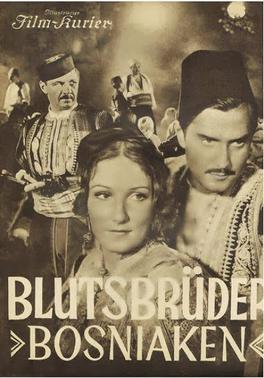
Blood Brothers is a 1935 German drama film directed by Johann Alexander Hübler-Kahla and starring Brigitte Horney, Carl Esmond, and Attila Hörbiger. It is set in Bosnia.
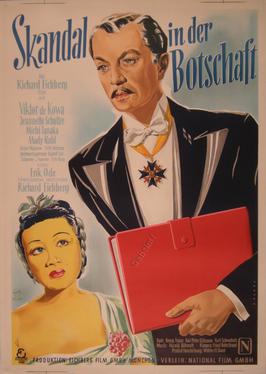
Scandal at the Embassy is a 1950 West German comedy film directed by Erik Ode and starring Viktor de Kowa, Jeanette Schultze and Michiko Tanaka.

Decoy is a 1934 German adventure film directed by Hans Steinhoff and starring Jakob Tiedtke, Viktor de Kowa, and Jessie Vihrog. A separate French-language version, The Decoy, was released the following year with a largely different cast. It was shot at the Babelsberg Studios and on location in Hamburg, Turkey and the North Sea. The film's sets were designed by the art directors Artur Günther and Fritz Maurischat.

Ripening Youth is a 1955 West German drama film directed by Ulrich Erfurth and starring Adelheid Seeck, Maximilian Schell, and Albert Lieven. It was shot at the Göttingen Studios in Göttingen. The film's sets were designed by the art director Alfred Bütow.

The True Jacob is a 1931 German comedy film directed by Hans Steinhoff and starring Ralph Arthur Roberts, Anny Ahlers, and Felix Bressart. It is based on a play by Franz Arnold and Ernst Bach which has been adapted into numerous films.

Her Other Self is a 1941 German drama film directed by Wolfgang Liebeneiner and starring Hilde Krahl, Mathias Wieman, and Erich Ponto.

Love's Carnival is a 1930 German drama film directed by Hans Steinhoff and starring Lien Deyers, Mathias Wieman, and Eduard von Winterstein. The film is base upon the play by Otto Erich Hartleben. It was shot at the Babelsberg Studios in Berlin. The film's sets were designed by the art director Robert Herlth.
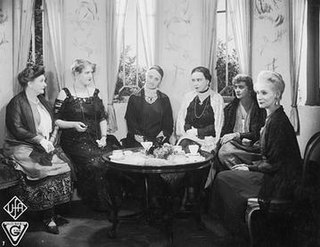
Potsdam or Potsdam, the Fate of a Residence is a 1927 German silent drama film directed by Hans Behrendt and starring Christa Tordy, Hans Stüwe, and Camilla von Hollay.

The Cry of the Wild Geese is a 1961 Austrian historical drama film directed by Hans Heinrich and starring Ewald Balser, Heidemarie Hatheyer and Brigitte Horney.
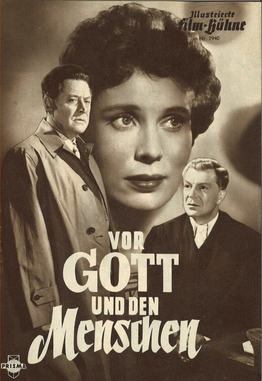
Before God and Man is a 1955 West German drama film directed by Erich Engel and starring Viktor de Kowa, Antje Weisgerber and Hans Söhnker. It was shot at the Tempelhof Studios in West Berlin. The film's sets were designed by the art directors Emil Hasler and Walter Kutz.
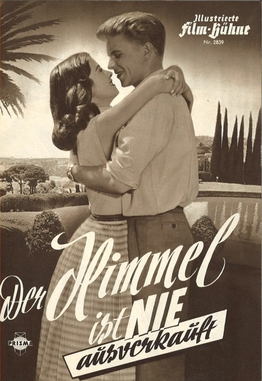
Heaven Is Never Booked Up is a 1955 West German romantic comedy film directed by Alfred Weidenmann and starring Hardy Krüger, Irene Galter and Peer Schmidt. It was shot at the Tempelhof Studios in West Berlin and on location around Berlin and Rome. The film's sets were designed by the art directors Emil Hasler and Walter Kutz.



















